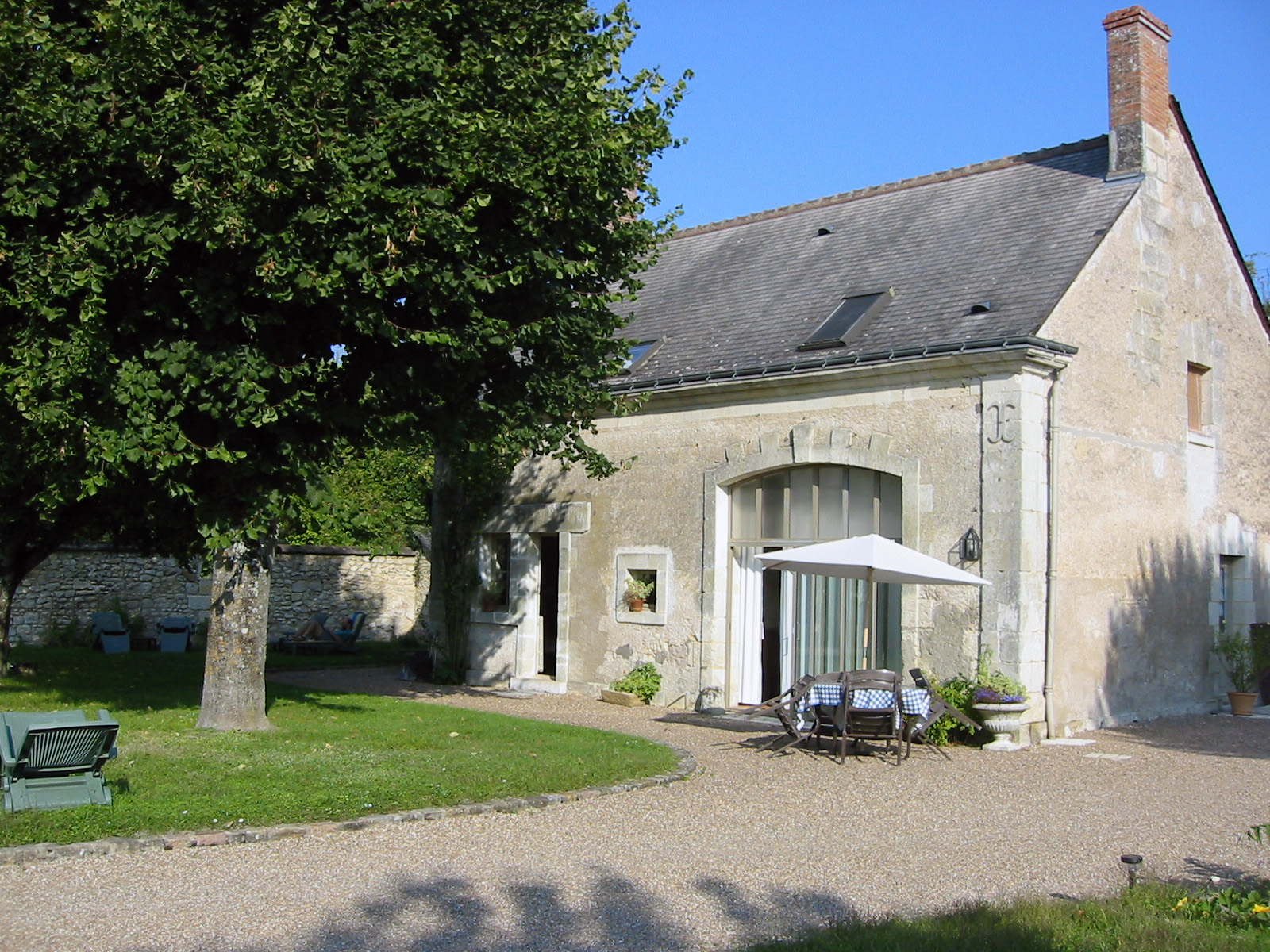 We’ve rented a small stone house near Tours, a 10 minute walk from the charming little village of Azey le Rideau, which, of course, also has a beautiful Chateau; every town and village in the Loire Valley is near a large beautiful Chateau. The old French aristocracy was enormously wealthy. When you visit this “valley of the kings” it’s easy to understand why the peasant class was so pissed off.
We’ve rented a small stone house near Tours, a 10 minute walk from the charming little village of Azey le Rideau, which, of course, also has a beautiful Chateau; every town and village in the Loire Valley is near a large beautiful Chateau. The old French aristocracy was enormously wealthy. When you visit this “valley of the kings” it’s easy to understand why the peasant class was so pissed off.
Originally our house provided worker’s quarters for a nearby Chateau (currently a convalescent home), but it’s recently been remodeled into a 2 bedroom 2.5 bath tourist rental. Everything is small but very well designed, although Gretchen just informed we “that we now know the limits of the hot water; it’s either a shower and a shave or 2 showers.” No problem, I only shave every 3 days anyway. Speaking of the shower, as many of you have experienced, European shower boxes can be pretty small. This one is compacted into a 24” equilateral triangle with a curtain on one side. It’s hard to lift up your arms without pushing the curtain and drenching the floor with water. I refer to it as “the penguin shower”.
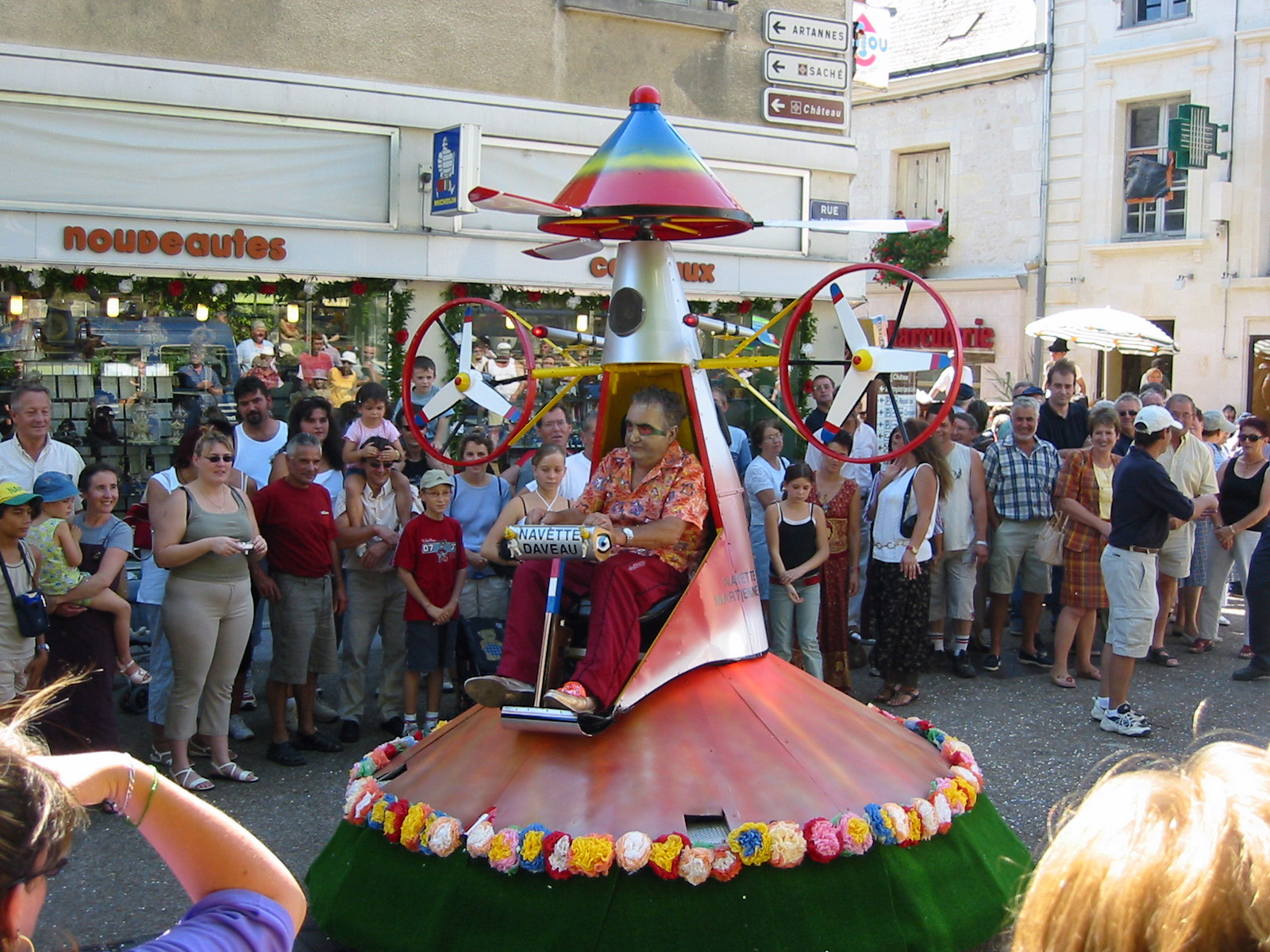 We arrived to Azey le Rideau on the eve of the annual “Festival of Agriculture”, which is a big deal in this small agricultural community. We ate a small dinner, drank a few glasses of wine and went to sleep around 10pm, but an hour later, the fireworks display just a few hundred meters down the road woke us up and we ran outside to see the entertainment.
We arrived to Azey le Rideau on the eve of the annual “Festival of Agriculture”, which is a big deal in this small agricultural community. We ate a small dinner, drank a few glasses of wine and went to sleep around 10pm, but an hour later, the fireworks display just a few hundred meters down the road woke us up and we ran outside to see the entertainment.
 The following afternoon, the grand parade was set to roll through the narrow medieval streets of Azey and the entire village as well as the surrounding communities were on hand to see it. We grabbed a spot under the shade of the trees outside of the Gendarmerie and watched the marching bands and large, colorful, crepe paper and woven basket floats filled with beautiful children throwing large amounts of confetti. It was very silly.
The following afternoon, the grand parade was set to roll through the narrow medieval streets of Azey and the entire village as well as the surrounding communities were on hand to see it. We grabbed a spot under the shade of the trees outside of the Gendarmerie and watched the marching bands and large, colorful, crepe paper and woven basket floats filled with beautiful children throwing large amounts of confetti. It was very silly.
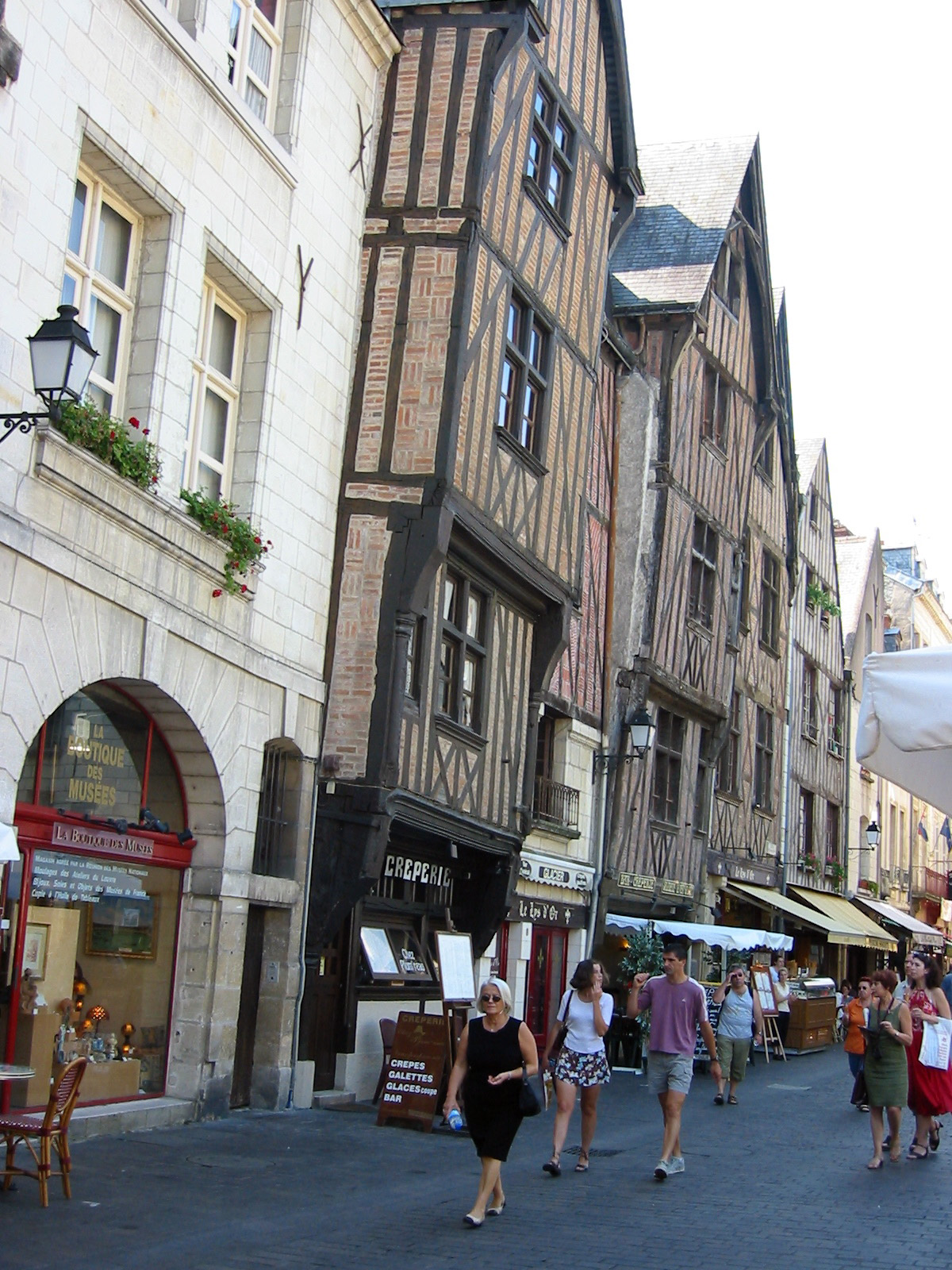 Tours
Tours
Like many small cities throughout Europe, once you get inside, you can find the old quarter. The Centre Ville of Tours is lined with charming small medieval streets of half timber and brick houses that over the years have leaned towards the street, almost as if they’re too old and tired to stand up straight any longer. There is a wide choice of restaurants serving pizza, crepes, gallettes (French pizza) and beer. It’s a good spot for lunch and people watching. Speaking of people watching, I know the French have been fond of henna and red highlights for years, but the color these days is almost dayglo. This aren’t the young rebellious pierced people either, these are women in their late 40’s, early 50’s with Bozo colored hair.
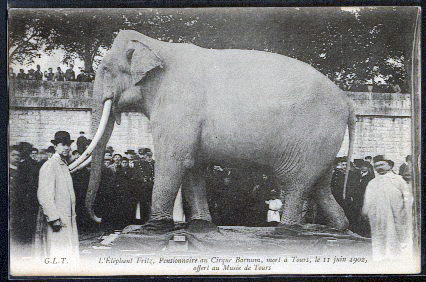 We didn’t go into the Musée Beaux Arts in Tours, but we did stop in the grand courtyard to gawk at the giant cedar of Lebanon planted in 1804. It’s currently 108’ tall and 102’ wide, and still growing. The pine cones alone could do some damage if they fell and bonked you on the head.
We didn’t go into the Musée Beaux Arts in Tours, but we did stop in the grand courtyard to gawk at the giant cedar of Lebanon planted in 1804. It’s currently 108’ tall and 102’ wide, and still growing. The pine cones alone could do some damage if they fell and bonked you on the head.
There are some beautiful grounds around the Musée and as we took a stroll into the old stables, we literally stumbled upon the stuffed remains of Fritz the Elephant. Fritz came to Tours in 1902 with the Barnum and Bailey Circus, but on June 11th, 1902, in front of a crowd of curious Tourisians, he keeled over and died. Not too eager to carry the carcass back to the US, the circus gave the remains to the city. I’m sure they were delighted. However, it appears the local taxidermists of the time had no idea of how to treat old Fritz. The taxidermy looks like a mixture of etched concrete and wiry hair.
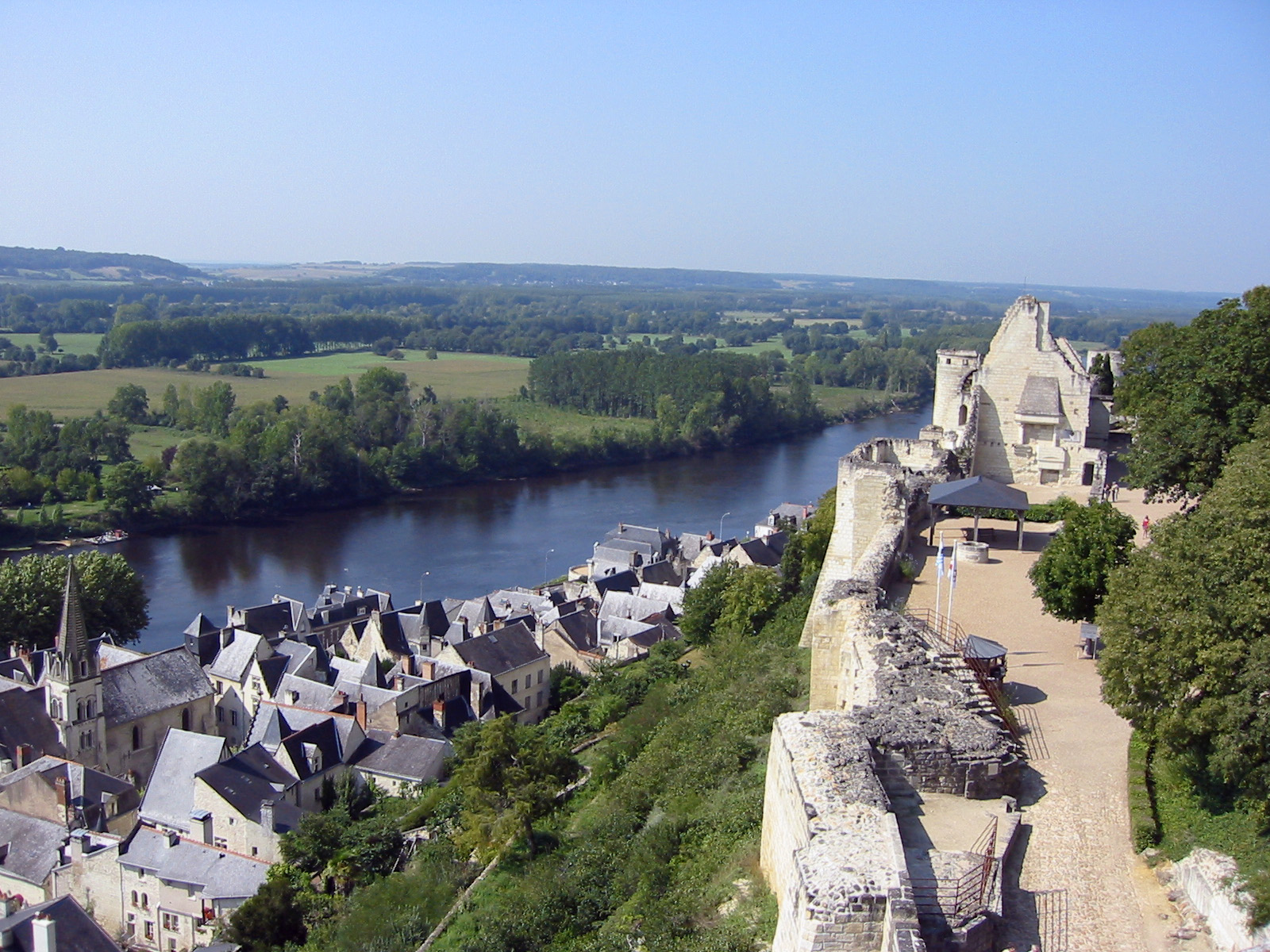 Chinon
Chinon
The remains of this fortress castle still show the enormous scale brought to it by Henri Platagenet, England’s King Henry II in the late 12th century. This was the French home of the Henry II and Eleanor of Acquitaine (so wonderfully played by Peter O’Toole and Katherine Hepburn in the Lion of Winter). It’s where Richard the Lion Hearted died and where Richard’s younger brother, John Lackland stole Isabelle d’Angouleme to be his wife. There is so much English history here, but this is France and they’d rather show you the story of how the 18 year old Joan of Arc arrived to Chinon and recognized the Dauphin Charles VII as the next king of France. Jean d’Arc means big tourist dollars for the Loire Valley and she’s everywhere from church to souvenir stand.
Outside the Castle wall is the beautiful Clos de L’Echo winery. It was like being transported back to Napa Valley. I usually think of the Chinon wines as rather light and wimpy but we were captured by the moment and left with a bottle in hand. By the way, we drank the wine 2 days later, and it was even better.
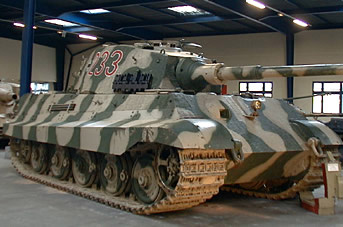 Saumur
Saumur
We visited this chateau a few years back. Saumur has a big interest in horsemanship and a lot of the Chateau is dedicated to the Equestrian way of life. I also remember they have a cloak worn by the scourge of the Spanish inquisition, Tomas de Torquemada.
But for us, this visit to Saumur was to see the Musée des Blindes (the Tank museum). Yes, in the midst of all these beautiful Chateaux is one of the largest collections French, German, Russian, American, Canadian, Czechoslovakian, South African and Swiss tanks dating from the early 1900’s to the 1980’s. With over 880 vehicles it’s one of the largest Tank Museums in the world. The museum is actually too small to display all of them. I think the German Panzer tanks might have been the same ones that were disabled during a British bombing of the town in 1944.
An aside: I have rediscovered a small French baked puff pastry known as the chouquette. They just seem to want to pop right into my mouth. I can’t stop them.
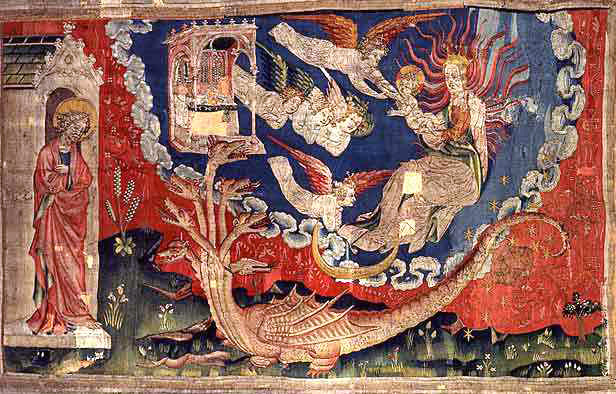 Angers and the Apocalypse tapestry
Angers and the Apocalypse tapestry
In 96AD, John of Jerusalem (before he was St. John of Patmos) was banished to the Agean island of Patmos during the reign of Roman emperor Domitian. It was here where he received the book of the revelation of the Apocalypse. I don’t know what was growing on the island of Patmos at that time, but this is one of the most psychedelic dream fantasies I’ve ever come across. What an imagination; the four horsemen, the gates of hell open up, 7 trumpets call the doom, Satan is released, the beast of the land and the beast of the sea, death and destruction everywhere. But then, there’s good news, after most of the world has been destroyed, the forces of God defeat the evil forces and create the new Jerusalem.
It’s believed by some that John was actually writing about current events and he believed the world was actually coming to an end. In 70AD, the Romans destroyed Jerusalem. John, being a jew, believed Rome was the Whore of Babylon and that the Romans were the four horsemen of the Apocalypse who opened the gates of hell. The eruption of Pompeii was in 79AD, another sign the world was coming to an end. By the time John arrived in Patmos, somewhere between 81-96AD, he created his explanation of what was happening.
In the late 1300s, Duke Louis I of Anjou commissioned the Apocalypse tapestries. They were drawn up by a Flemish artist and woven in Paris by tapestry artisan, Nicholas Bataille. They was donated to Angers by good King René in 1480 and they’ve been here ever since.
These 76 tapestries are the oldest in the known world. There are 8 missing, but tapestry scholars through the centuries have been able to piece it all together. There are six sections, each 78′ tall and 20′ wide. Given the destructive history of the castle from the feudal wars to the French Revolution to the Nazis blowing up a munitions warehouse outside the castle walls, it’s amazing to see how well preserved they are. The guided tours are in French so if your high school French isn’t up to the challenge, go to the bookstore by the exit of the Castle and buy the Tapestry guide book in English. It costs about 5€ and takes about 15 minutes to read. Then go into the tapestry room and the whole story makes sense; well at least the explanation makes sense. The story is much too weird. As you follow the panel numbers in the Tapestry hall, you’ll notice that some of them go left to right and others go right to left. These tapestries were woven on a loom and are just as good from either side. When one side got too faded, they just turned them around.
 Le Mans
Le Mans
We’ve driven by this city at least a half dozen times. About 10 years ago, we somehow ended up on the course of the Le Mans Grand Prix. We kept on noticing all these beautiful old sports cars in front and behind us and wondered what was going on. Then we started seeing groups of spectators on the roadside. It finally dawned on us. We were on the Grand Prix route in some sort of pre or post function. Although our Renault Laguna didn’t really fit in with all the Porsches and Ferraris, we smiled and waved to the crowds anyway.
Le Mans is mostly noted for the famous automobile race, but there is an excellent old medieval city with the 11th century Cathedral St Julien that had so many buttresses it looks like a stone spider web.
The old medieval houses are tres charmant, and surprisingly void of tourist shops. The Le Mansians renovated an old medieval village just for themselves. And yes, the architects of the grand Cathedral were so excited about the invention of the flying buttress, they put them everywhere.
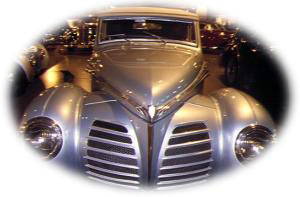 However, the big thrill of Le Mans is the Musée de L’Automobile de la Sarthe, a very large and most complete collection of automobiles dating from 1901 to the present. There were cars I had only heard about like the Hispano Suiza. There were French Peugeots from 1902, a 1912 Willys Overland, sexy and sleek grand autos from the 1930s and 40s, prototypes and race cars of the 1950’s and of course the cars that currently compete in the race. And since the museum is directly next to the race track, we snuck over the barricade and watched a Porsche do some laps.
However, the big thrill of Le Mans is the Musée de L’Automobile de la Sarthe, a very large and most complete collection of automobiles dating from 1901 to the present. There were cars I had only heard about like the Hispano Suiza. There were French Peugeots from 1902, a 1912 Willys Overland, sexy and sleek grand autos from the 1930s and 40s, prototypes and race cars of the 1950’s and of course the cars that currently compete in the race. And since the museum is directly next to the race track, we snuck over the barricade and watched a Porsche do some laps.
We left the city following the Le Mans Grand Prix course, through the streets and onto the National route 138. Gretchen drove, I waved to the people, just like we did over ten years ago.
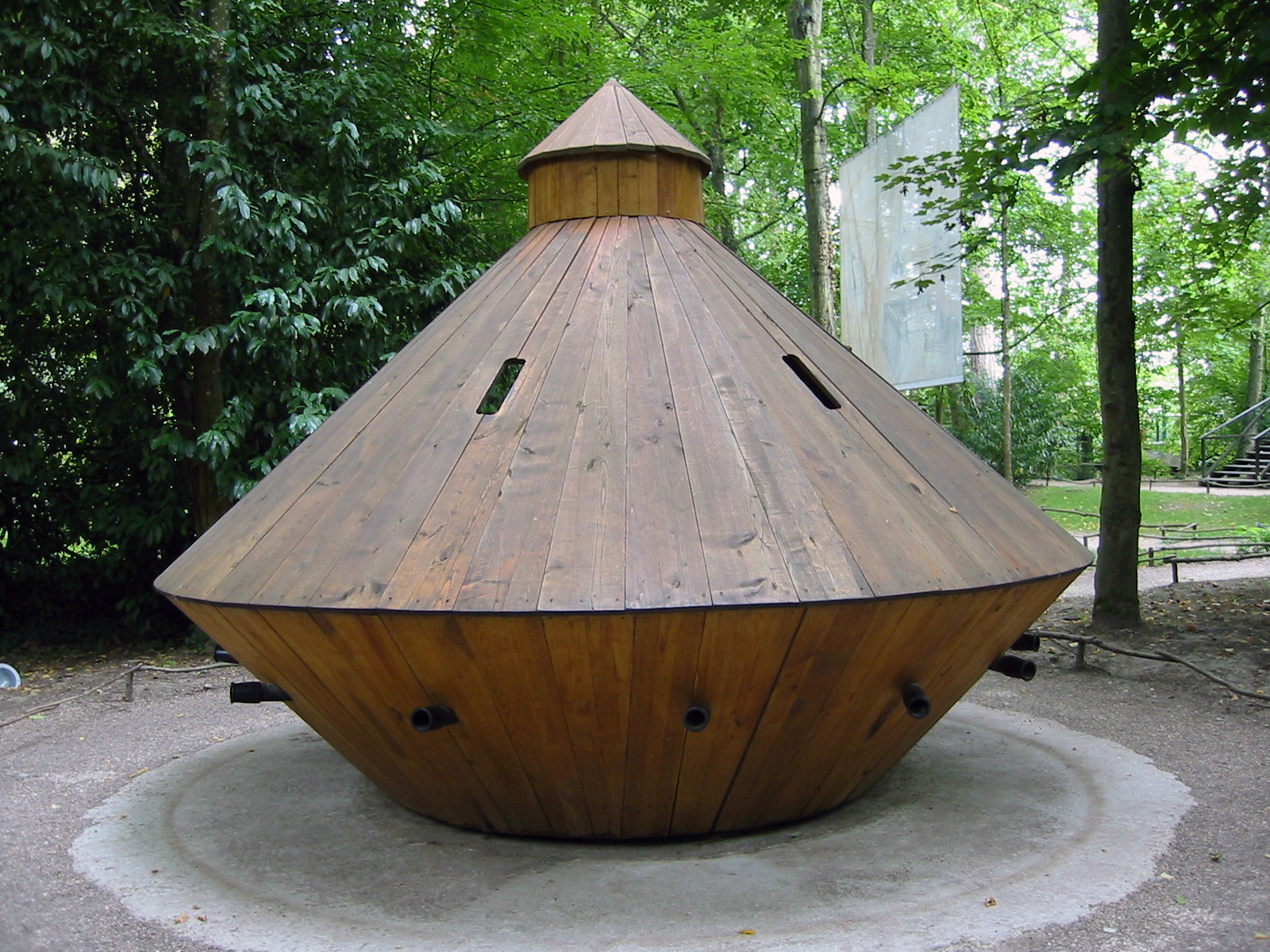 Amboise
Amboise
King Francis I invited Leonardo Da Vinci to France in 1516, telling the great master that here in Amboise, you’ll be free to dream, to think and to work. Leonardo accepted the post and was given the small Chateau Clos Luce as his residence. He was given the title “The King’s First Painter, Engineer and Architect”. Leonardo arrived with 3 paintings as gifts to King Francis, the Mona Lisa, St John the Baptist and St Anne. The Mona Lisa and St John remained in France and are still on display in the Louvre, but somehow the painting of St Anne with Jesus, John the Baptist and the Virgin Mary ended up at National Gallery in London.Leonardo died here in 1519. He was 67 years old.
The Clos Lucé is a wonderful museum of Leonardo’s whimsical inventions. The scale models of the automobile (or people powered wagon), the rapid firing canon, the steam gun, pivoting bridges, paddle boats and other war machines are inside the Chateau and around the grounds. There was even his invention of the pipe wrench; very similar to the one used today. There are 40 machines propped around the estate, built from the Leonardo’s drawings.
Like many grand Chateaux of the Loire, Amboise played a central role in French aristocracy. All the French Kings and Queens lived there at one point or another from the 15th through the 19th century. It was at the center of the protestant plot in the War of the Religions. In 1515, a 29 year old King Charles VIII, the French King who marched into Italy and tried to depose Pope Alexander VI (Borgia), walked into a low hanging stone lintel over a short doorway in passageway used as a pissoir and died within 2 hours. We spent an hour in the Chateau looking for the famous doorway but no-one we asked knew where it was. One of the costumed characters hired to add authenticity to the setting asked “are you sure this happened at Amboise?” Oh well, they are just actors.
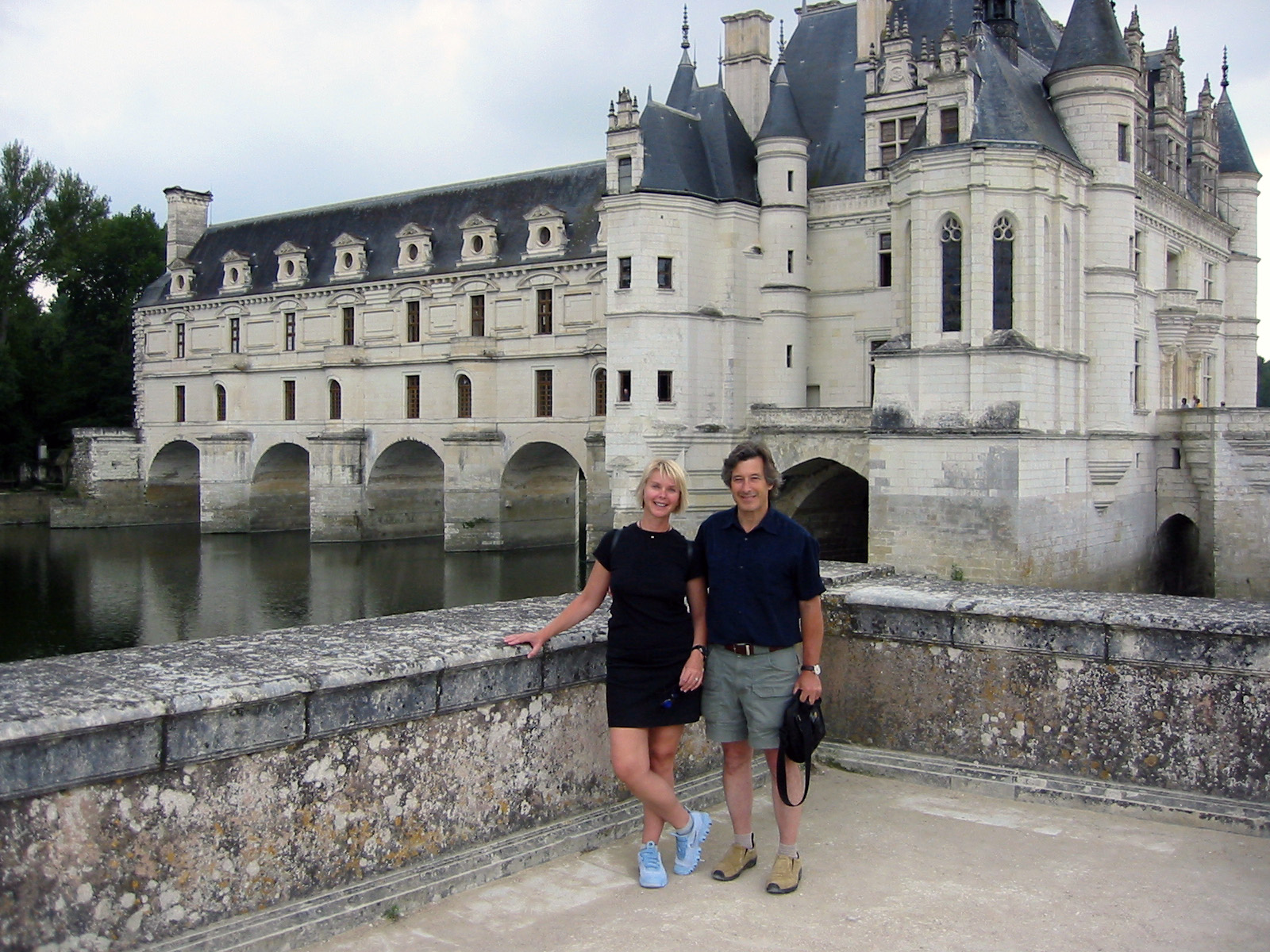 Chenoceau
Chenoceau
This is one of the grand Dames of the valley. The parking lot alone is larger than most of the other Chateaux of the area. Henri II built it for his mistress Diane de Portiers but after he (Henri II) was killed in jousting contest (a block from our apartment in Paris) his wife, the evil Catherine de Medici threw Diane out of Chenonceau and moved herself in. It’s almost like visiting two castles. There’s the Diane garden and the Catherine garden, the Diane bridge and the Catherine gallery over the bridge. In some locations, the royal design of H (Henri) and C (Catherine) are intertwined to create a D (for Diane).
The castle has it’s own bizarre history. When Henri III (son of Henri II and Catherine de Medici) was killed by a Dominican priest, his wife Louise de Lorraine, closed herself into a room on the third floor, painted the walls black and stayed there in mourning for the rest of her life. The black walls are still there just as she left them.
The Chateau is in surprisingly good condition. It was spared the looting of the Revolution and suffered minor damage from the two world wars. An interesting fact. During the second World War, one side of the Chateau was in German occupied France while the other side was in Vichy France. You can take the tour with an IPOD audio guide, which was lots of fun, if you know how to work an IPOD. There were lots of frustrated people stacked up at the audio guide desk.
You must be logged in to post a comment.